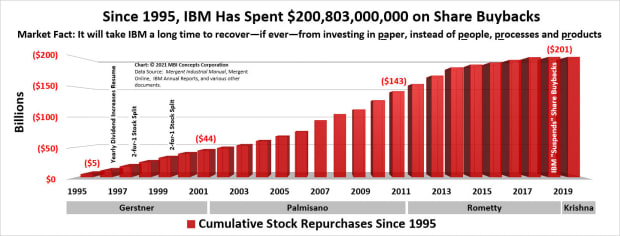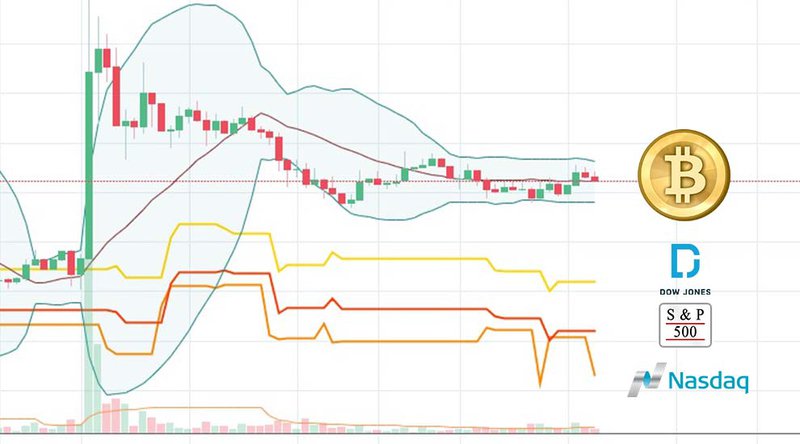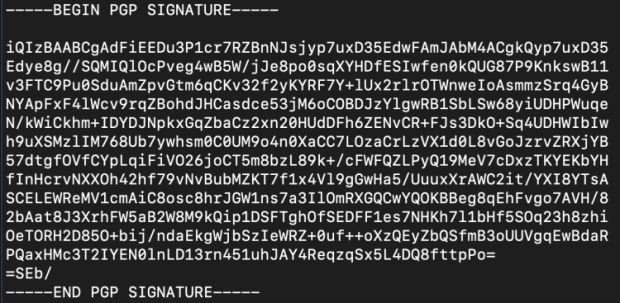The Semantics Of The Bitcoin Layers
While we casually talk about Bitcoin having multiple layers, the word itself has historical meaning.
The Semantics Of A Bitcoin Layer
The idea of a layer comes from two worlds, each of which uses a layered approach in a distinct manner: the world of money, and the world of networks. In this article we will briefly explore both worlds. After the concept of layers has been established, we will relate the layered framework to Bitcoin, which is a unique and new hybrid of both money and technology. We will introduce the nuance of layers, and propose that distinction in language is used in the absence of redefining historical context or using an entirely different nomenclature.
Layers A La Moneys, Historically
Monetary layers have emerged many times throughout the course of history for a variety of reasons. Most notably, layers occur as a mechanism to ease the transfer of money from one party to another.
Let us consider the U.S. dollar during the pre-1971 era. Both gold and silver were legal tender and could be used to make transactions. These precious metals are not easily divisible and have other physical characteristics that make them undesirable to use in day-to-day transactions, such as ease of transport. For his reason, a second monetary layer emerged: one in which the bank held gold deposits on your behalf, and provided you with an IOU note representing that deposit. This note would be redeemable for the gold, and the bearer of this note has claim to the gold deposit.
Instead of transacting with gold, individuals would now transact with the notes representing the gold. As we would see later in history, this system was rife with corruption. This is the story of the U.S. dollar and the ultimate failure of the gold standard. For an in-depth dive into the world of monetary layers, I recommend reading Nik Bhatia’s “Layered Money”.
Layers A La Networks, Historically
The digital world brought with it the emergence of digital networks — most notably, the internet. The internet as we know it and use it today is a layered architecture referred to as the Internet Protocol Suite, or TCP/IP for short.
A layered protocol approach allows us to reach consensus and break very complex ideas down into separate components. It also provided interoperability such that end users can plug in with their own products or software.
Layers A La Bitcoin
Conversations about applying the layered framework to Bitcoin often end with little to no consensus, as Bitcoin distorts and blurs traditional intuitions. This distortion stems from Bitcoin being both a money and a network, each of which, historically, has a layered framework that is distinct from the other. Most disagreements about bitcoin layers are due to the proponents talking right past each other.
Let’s start with some common ground, where most folks would agree: Bitcoin Layer 1. The Bitcoin protocol is enforced by the operation of full nodes. These nodes store the entire Bitcoin blockchain and validate the legitimacy of transactions that miners include in blocks. Generally, the first layer of Bitcoin is the set of interactions that falls within the full node enforced protocol: cryptographic ownership of a UTXO, a transaction from address A to address B, the block height of the current block, etc. Simple, right? That’s because the first layer of Bitcoin fits cleanly within both the Layer 1 monetary application and the Layer 1 technological application frameworks. They reconcile with each other entirely.
The Bitcoin Protocol:
Monetary Layer 1: Check
Network Layer 1: Check
“The full node enforced protocol is the Layer 1 of Bitcoin”: Check
As we continue on to the second layer of Bitcoin, it is important to understand why we need a layered approach in the first place. Everything in life has trade-offs, including Bitcoin. The Bitcoin protocol is optimized for both dentralization and security on its first layer, which is achieved through limited block space and ten minute block intervals. These critical parameters severely throttle the amount of transactions that the Bitcoin blockchain can process, which is in the ballpark of five to seven transactions per second. However, these parameters allow for more individuals to run a Bitcoin full node (decentralization) as well as enabling a competitive fee market for transaction confirmation (security). For these reasons, scaling Bitcoin to billions of users on the base layer is not possible. The Bitcoin blockchain will be the global settlement layer used by individuals, banks, and corporations willing to wait a few minutes and pay an on-chain fee for final settlement. The Layer 1 blockchain will be used for finality, while other layers will be used for other applications, such as day to day transactions (a coffee being the classic example).
Having said that, it is useful to explicitly define what solution a layer is providing to the Bitcoin network. Often, layers are trying to solve the limited transaction capacity of BTC on the main blockchain, as described above. This is not to say that some layers may not focus on other problems (such as privacy), but for simplicity and the scope of this writing, we will examine layers with transaction scalability applications.
In theory, the approach of solving transaction scalability is quite simple: many transactions shall be embedded within one on-chain (Layer 1) transaction. We lock some BTC away, pass it around to each other indefinitely, then throw it back to the mainchain for settlement. At the heart of it, this is a Layer 2 Bitcoin application. It is now an appropriate time to introduce the concept of “on-chain” and “off-chain” transactions, which some would argue is more clear than using the jargon of layers and all of the semantic baggage that comes with it. Put simply, an on-chain transaction is any transaction that occurs on the Bitcoin blockchain (I send some BTC to a BTC address that you provide me), while an off-chain transaction is any transaction that occurs off the Bitcoin blockchain (I send “IOU” BTC balance from my Cash App account to your Cash App account). By definition, all Layer 2 solutions on Bitcoin make use of off-chain transactions as they are not in the scope of the full node enforced protocol.
A Monetary Layer Relationship To Bitcoin:
By following the historical concept of a monetary layer, we can define a Bitcoin monetary Layer 2 as any form of off-chain interaction that transfers a balance of BTC from one entity to another. The transfer of a BTC balance can happen in the form of an IOU, or in the form of actual ownership. This kind of monetary Layer 2 interaction can happen in many forms: through a third party, through the transfer of a private key, and even peer-to-peer via a network Layer 2 (discussed later). The recipient of this interaction has a claim to that amount of BTC on-chain, but does not receive exclusive ownership to the actual on-chain BTC until a separate on-chain transaction occurs.
It is important to note that not all monetary layers are created equal. They come on a spectrum of trustlessness, and many are entirely antithetical to the ethos of Bitcoin. Although we may not like it, the precedent of monetary layers has been established by history and we would need to redefine historical and semantic context to avoid Bitcoin’s association with monetary layers. Alternatively, we could avoid the concept of monetary layers and use different nomenclature entirely.
A Network Layer Relationship To Bitcoin:
By following the historical concept of a network layer, we can define a Bitcoin network Layer 2 as an interoperable protocol that is cryptographically pegged to the mainchain in a trustless manner. Being that the Bitcoin protocol forms a network, it is understandable that a network layer approach would be used to enable a multitude of operations. A transaction scalability capability would be a prime application for a network Layer 2 on Bitcoin. This would enhance features of Bitcoin without compromising any optimizations of the first layer. Any form of transaction scalability network layer would also be considered a monetary layer by its very nature of facilitating transactions off-chain.
What we actually consider a network layer on Bitcoin is going to be a bit controversial, but it is worth exploring and defining. For starters, a network layer must be a protocol that is interoperable with the Layer 1 Bitcoin protocol. Secondly, a network layer on Bitcoin respects all of the sovereign aspects of Bitcoin’s Layer 1 protocol. This includes its peer-to-peer nature, and its disintermediated verifiability. A network layer must not make use of IOUs in any form, as requesting to redeem BTC would invalidate the non-custodial nature of Bitcoin. For now, these qualifications are enough.
Combining Concepts:
There is a clear and important distinction to make when referring to a layer on Bitcoin. I propose that something be referred to simply as “a layer” only if the criteria for a network layer is met. Otherwise, it is just a monetary layer and should be referred to as its application name (ie. Cash App), or explicitly stated to be a monetary layer in the historical context of the words. The reason for this is that the historical context of monetary layers are in contradiction with the Bitcoin ethos, and conflating the two sets a bad precedence of language.
I do not believe we should redefine language and historical context to fit our agenda. For that reason, we must be precise in our words or create a new nomenclature entirely. Although it may be technically correct to refer to a monetary layer as a layer of Bitcoin, I believe it to be a dangerous precedent. We have seen the gold standard fail through a monetary layered framework, and applying this same framework to Bitcoin would undermine the sovereignty that Bitcoin enables.
Let’s be mindful of both the monetary and network layered aspects and walk through some actual examples:
A Bitcoin Exchange:
A Bitcoin Exchange is a custodial service which allows users to trade fiat for BTC. These exchanges generally allow users to transfer “IOU” BTC balances to other users. Specifically, this includes Cash App, Coinbase, Venmo, and many others.
The Bitcoin Exchanges:
Monetary Layer 2: Check
Network Layer 2: NO
“Exchanges are a Layer 2 of Bitcoin”: NO
The Liquid Network:
Liquid is a federated sidechain that operates independently but pegged to Bitcoin. The Liquid Network allows the general public to transfer BTC to L-BTC (the Liquid Network native asset), but requires functionary members to approve transfers of L-BTC back to BTC. Once a user has L-BTC, they can transfer it to other individuals using the Liquid Network. From the perspective of Bitcoin, this is an off-chain transaction, with L-BTC acting as “IOU” BTC.
The Liquid Network:
Monetary Layer 2: Check
Network Layer 2: NO
“The Liquid Network is a Layer 2 of Bitcoin”: NO
The Lightning Network:
The Lightning Network is the only layered application mentioned thus far that meets the criteria of being a Bitcoin network layer. Lightning allows users to maintain cryptographic ownership of the BTC they are interacting with, and allows users to redeem an on-chain UTXO without the approval of any third parties. The Lightning Network makes use of a multi-signature and channel based operation schema, which is largely beyond the scope of this article. For now, it is just important to know that the Lightning Network is trustless and peer-to-peer.
The Lightning Network:
Monetary Layer 2: Check
Network Layer 2: Check
“The Lightning Network is a Layer 2 of Bitcoin”: Check
Conclusion
There is a historical precedent for layers in both money and networks. Bitcoin is unique in that it is both a money and a network, which means it has distinct money and network layers that are often at odds with each other. I propose that something be referred to as a “layer of Bitcoin” only if it meets the criteria for a network layer. If only the money layer framework criteria is met, the application in question should be referred to by name, or explicitly noted to only be a monetary layer in the historical context of the words.
I want to note that I am not trying to mandate speech or tell you what you cannot say. I just believe this nuance to be important, as we are trying to escape the failures of all money that came before Bitcoin. If you found what I’ve written to be convincing, then feel free to join me!
If you’ve made it this far I hope that my perspective was clear and coherent. I’m sure this entire article could have been summarized in a few tweets, but I wanted to articulate all of the nuance that I believe this topic deserves. Do you agree with the premise? Disagree with the premise? Let me know what the f***is a layer on twitter @thefuckisalommy. Cheers.
[1] https://medium.com/breez-technology/lightning-btc-iou-62e3a712c913
[2] https://docs.blockstream.com/liquid/technical_overview.html
[3] https://www.layeredmoney.com/
This is a guest post by Lommy. Opinions expressed are entirely their own and do not necessarily reflect those of BTC, Inc. or Bitcoin Magazine.









